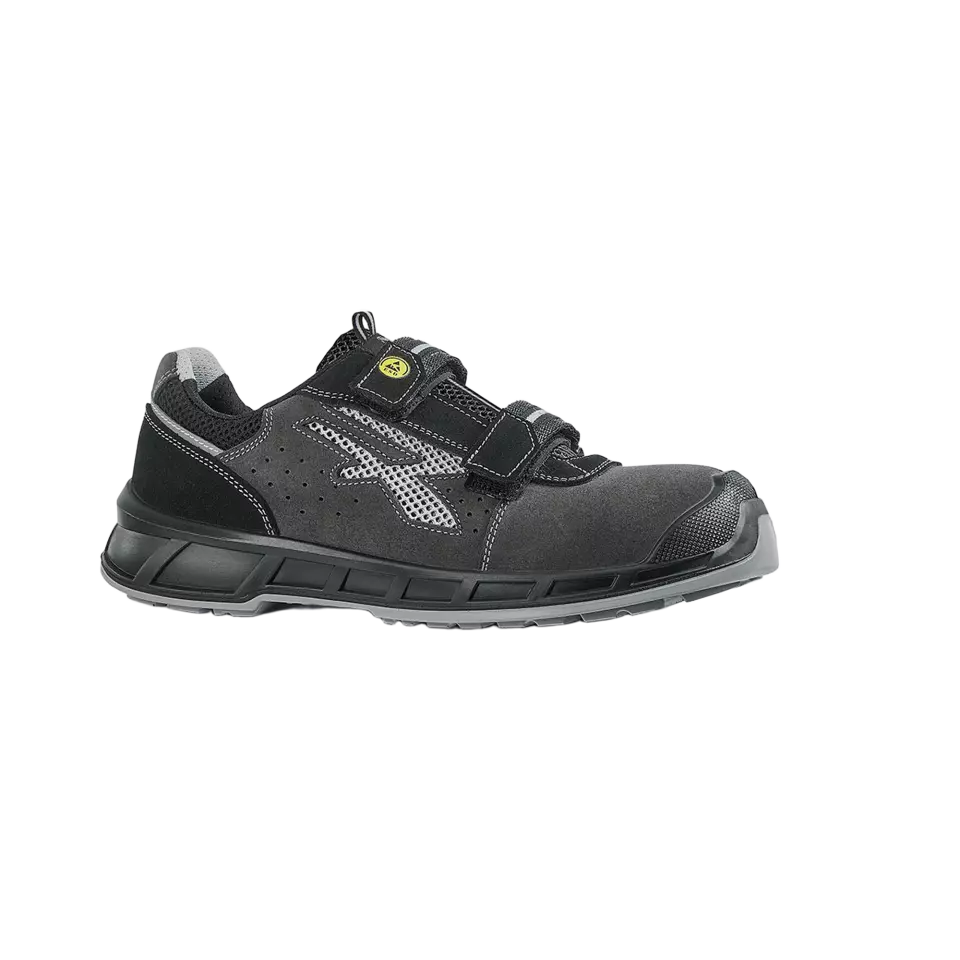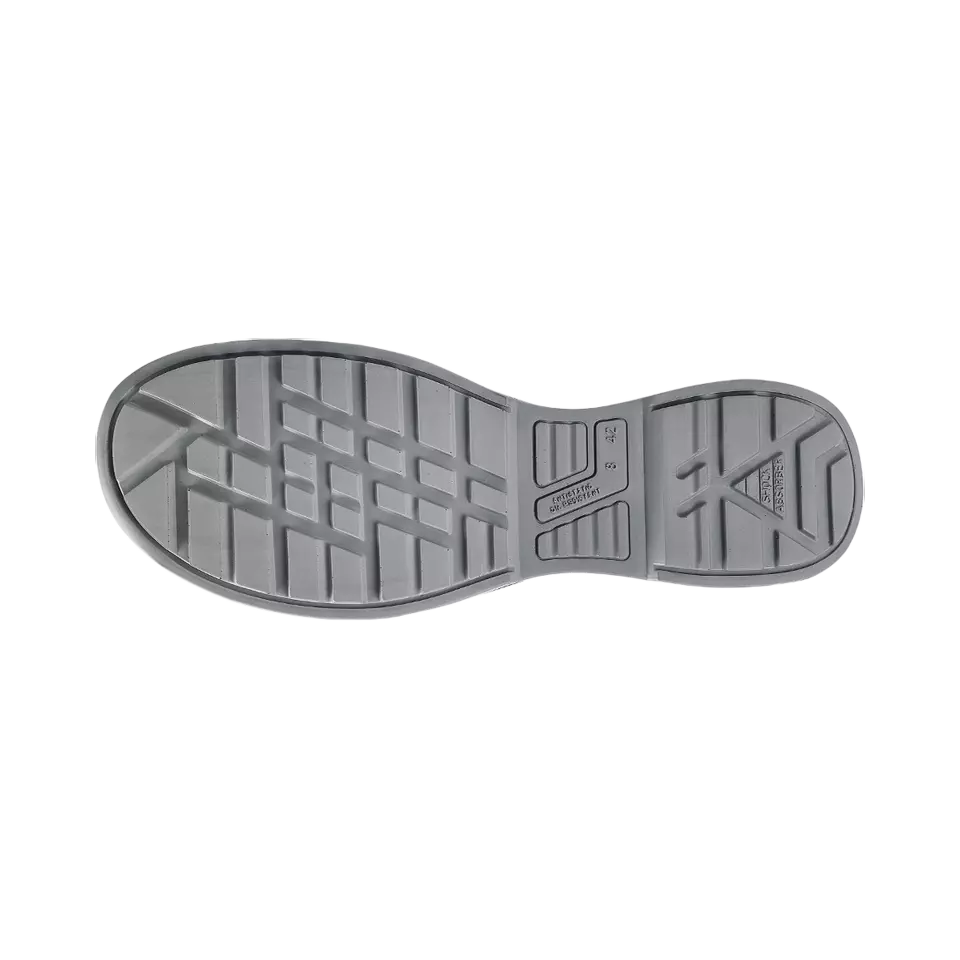U-Power Prince Sandal ESD S1PS FO SR
U-Power
visit storeProduct description
Safety Sandal Prince S1PS FO SR
Product Features:
- Hook and loop fastening
- Soft, perforated suede leather
- Super-breathable mesh inserts
- PU toe protection for enhanced protection and durability
- Wingtex® inner lining with ventilation channels
- Suitable for men and women
- Ideal for dry and warm environments
- Metal Free
Safety Features:
- Slip-resistant, abrasion-resistant, oil-repellent and antistatic compact PU soles
- Composite toe cap
- Save penetration-resistant system
Indicates the exterior color of safety footwear, helping you match workplace dress codes while considering visibility and practicality in your work environment.
Identifies the protective material in the toe cap that shields against impacts and compression. Different materials offer varying levels of protection, weight, and comfort.
Defines the substances used in construction that impact safety, durability, comfort, and protection from workplace hazards like impacts, chemicals, or electricity.
The material composition of the shoe's bottom portion that determines slip resistance, durability, and protection against workplace hazards like chemicals, heat, or punctures.
The color of the shoe's bottom surface that affects visibility in low-light conditions, complements uniform requirements, and reflects personal style preferences.
The method used to secure the shoe to your foot, affecting ease of putting on/removing, adjustability for comfort, and workplace safety.
Specifically designed for a woman's foot, offering a more tailored fit and enhanced comfort. Ensures optimal support for demanding work environments.
Specifically designed to offer a comfortable and secure fit for male feet. Built with wider and larger dimensions, ensuring optimal support.
Reduces impact on feet and joints, lessening fatigue during long hours on hard surfaces. Provides enhanced comfort for demanding work environments.
Withstands degradation from oil exposure, maintaining sole integrity and extending shoe life. Ensures reliable traction in oily environments.
Enhances stability on slick surfaces, reducing the risk of slips and falls. Designed for reliable grip and secure footing in various work environments.
- Antimicrobial Protection
- Impact Resistance
- Electrical Protection
- Slip Resistant
Request a free sample
Test first and buy later. Visit any product page to request your free sample.
Standards and labels
EN ISO 22568-2:2019 is a standard that sets out the requirements for testing and evaluating the fire safe design of industrial valves. It includes test methods and performance criteria for evaluating the ability of valves to withstand fire conditions and prevent the release of fluids. Possible test results include data on the valve's ability to prevent leakage, maintain its structural integrity, and function in high temperature environments.
EN ISO 22568-4:2019 is a standard that sets out the requirements for testing and evaluating the tightness of the actuator-valve assembly. It includes test methods and performance criteria for measuring the tightness of actuator-valve assembly when they are closed and under different pressure and temperature conditions. Possible test results include data on the valve's ability to prevent leakage and maintain its seal under varying conditions when actuated by different actuator types.
Test results
General Requirements FOThe standard EN ISO 20345:2011, specifically its General Requirement FO, pertains to footwear containing fuel oil-resistant outsoles. When footwear under this specification successfully meets the FO requirement, it implies that the footwear's outsole has been tested and confirmed to resist degradation due to contact with fuel oil. The test involves exposing the outsole material to fuel oil for a determined period, typically 22 hours, at a controlled temperature of 22°C. This test assesses the change in volume and properties of the outsole following fuel oil exposure by measuring its tensile strength and elongation before and after the exposure. For procurement professionals, a positive FO result indicates that the footwear's outsole will maintain its mechanical performance and integrity when in contact with fuel oil, making it suitable for industries where oil exposure is frequent, providing durability and reliable performance under such conditions.
General Requirements CRThe standard EN ISO 20345:2011 encompasses general requirements for safety footwear to ensure they provide adequate protection in various occupational environments. Rating 'CR' signifies that the footwear has a cut resistant upper ensuring enhanced protection. The test method involves assessing the material's resistance to splitting or cracking under certain conditions, which simulates real-world industrial hazards involving sharp objects or surfaces. Practically, this result ensures that the footwear is suitable for environments where there is a risk of materials splitting or getting caught, thereby providing essential safety benefits to the user.
General Requirements S1PThe EN ISO 20345:2011 standard sets the benchmark for safety footwear designed to protect users from injuries and accidents in diverse environments. The S1P designation under this standard refers to footwear that has 200 joules toe cap, fully enclosed heel, anti-static protection, energy absorption in the heel, and penetration resistant midsole. The test for the S1P requirement involves ensuring that the footwear has a resistant toe cap tested against a 200-joule impact, electrical resistance testing under defined conditions to confirm anti-static properties, and penetration resistance, where the sole is tested against a force of at least 1100 Newtons. Moreover, the heel region of the footwear is required to absorb energy, thereby reducing impact during wear. These criteria make EN ISO 20345:2011 S1P certified footwear ideal for environments where sharp objects, electric charge, and heavy impact risks are prevalent, thereby guaranteeing a high safety standard for wearers in such conditions.
CE Marking is a label that shows a product meets certain safety and environmental standards set by the European Union. To get the CE Marking, a company must test and certify their product meets these standards. CE Marking is required for many products sold in the EU, including electronics, machinery, toys and medical devices. It helps ensure that products are safe for consumers and the environment, and allows for easy trade within the EU.
PPE stands for "personal protective equipment." PPE Category 2 refers to equipment that is more complex, and has a higher level of risk. Examples of PPE Category 2 include safety helmets, ear protection, and fall arrest equipment. In Europe, PPE Category 2 must meet certain safety standards set by the European Union, which means that it must be designed and manufactured to protect the user without causing harm. Companies that make or sell PPE must prove that it meets these standards. They also must have a quality management system in place and have to be audited regularly by a notified body.
U-Power delivery terms
Free delivery when you order more than 1 650,00 kr from U-Power
Supplier shipping fee 60,00 kr
Brand minimum 0,00 kr
569,33 kr
Shipping fee is 60,00 kr for orders under 1 650,00 kr
Sold in units of one pair
Need larger quantities?
Other products you may like
Recently viewed
Need help?
Get help from our experts
Other products you may like
Similar products you may like
Recommended for you
U-Power
Delivery time: 5 business days
Supplier shipping fee 60,00 €
Free shipping on orders over 1 650,00 €



Find +150,000 products from hundreds of brands
Autonomous sourcing platform
The most efficient way to source and order supplies for your operations
Sourcing
Ordering
List products you’re looking for and we’ll find the best products and prices for you – all for free.
Need help?
Get help from our experts

